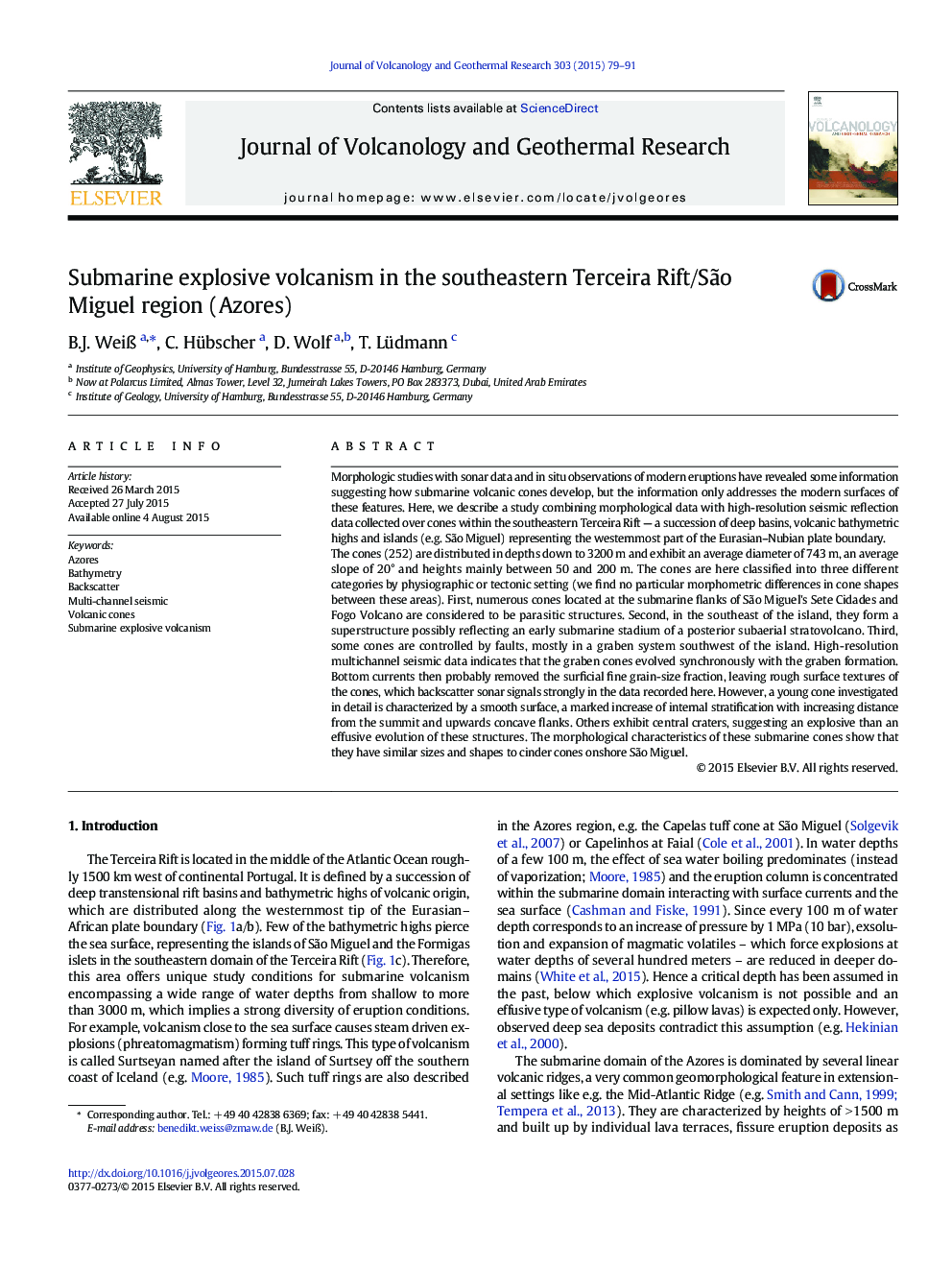| Article ID | Journal | Published Year | Pages | File Type |
|---|---|---|---|---|
| 6439882 | Journal of Volcanology and Geothermal Research | 2015 | 13 Pages |
Abstract
The cones (252) are distributed in depths down to 3200 m and exhibit an average diameter of 743 m, an average slope of 20° and heights mainly between 50 and 200 m. The cones are here classified into three different categories by physiographic or tectonic setting (we find no particular morphometric differences in cone shapes between these areas). First, numerous cones located at the submarine flanks of São Miguel's Sete Cidades and Fogo Volcano are considered to be parasitic structures. Second, in the southeast of the island, they form a superstructure possibly reflecting an early submarine stadium of a posterior subaerial stratovolcano. Third, some cones are controlled by faults, mostly in a graben system southwest of the island. High-resolution multichannel seismic data indicates that the graben cones evolved synchronously with the graben formation. Bottom currents then probably removed the surficial fine grain-size fraction, leaving rough surface textures of the cones, which backscatter sonar signals strongly in the data recorded here. However, a young cone investigated in detail is characterized by a smooth surface, a marked increase of internal stratification with increasing distance from the summit and upwards concave flanks. Others exhibit central craters, suggesting an explosive than an effusive evolution of these structures. The morphological characteristics of these submarine cones show that they have similar sizes and shapes to cinder cones onshore São Miguel.
Keywords
Related Topics
Physical Sciences and Engineering
Earth and Planetary Sciences
Geochemistry and Petrology
Authors
B.J. WeiÃ, C. Hübscher, D. Wolf, T. Lüdmann,
